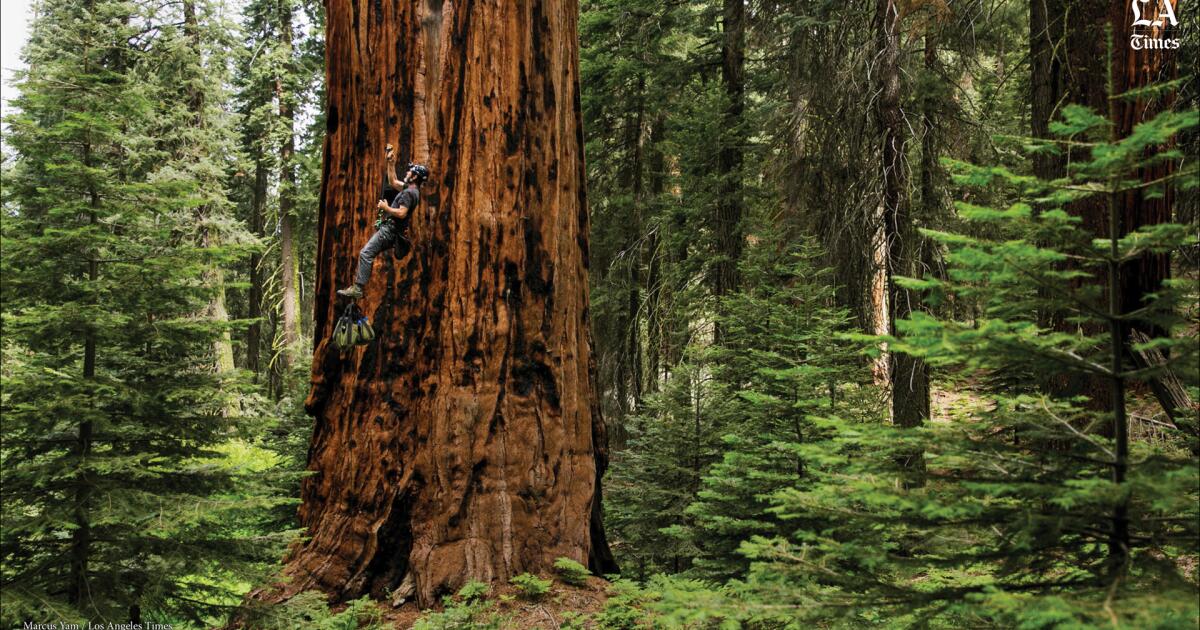
Four years after unveiling an ambitious plan to conserve 30% of California’s coastal lands and waters by 2030, state officials announced Monday they are moving closer to that goal.
Since the so-called 30×30 initiative began, California has added nearly 1.5 million acres — or about 2,350 square miles — of conserved land, according to a progress report from Gov. Gavin Newsom and the California Natural Resources Agency.
Overall, the report shows that California has now conserved 25.2 percent of its land and 16.2 percent of its coastal waters with just over five years to go until the deadline.
“In 2020, I signed an executive order to preserve 30 percent of California’s lands and 30 percent of its coastal waters by 2030,” Newsom said in a statement. “And four years into this effort, we are well on our way to achieving that goal, with more than a quarter of our lands protected. We will not stop working to protect California’s unparalleled natural beauty for generations to come.”

Aggressive, hard-hitting reporting on climate change, the environment, health and science.
The stated goals of the 30×30 initiative go beyond conservation. The plan also aims to help restore biodiversity, expand access to nature, and help mitigate and build resilience to climate change.
The initiative got underway in earnest in 2022, when officials released a detailed road map for the plan. The state added 631,000 acres between April of that year and May 2023, and has added another 861,000 acres since then, according to the report.
“It’s great that we’ve passed the 25 percent mark, but we still have more work to do,” said California Secretary of Natural Resources Wade Crowfoot. “We’re really encouraged by the progress we’ve made and that so many entities are partnering with us to get out there and preserve places, whether they’re land trusts, tribes, or local governments. We’re on the right track and we need to keep the momentum going, but this year is a big step forward.”
The increase in acreage this year includes areas that were newly conserved through land restitution, land acquisitions, new conservation easements and other methods, the report said.
The increase also includes areas that were found to meet the 30×30 definition after lacking sufficient data to assess their level of biodiversity protection and management.
Among the most significant recent gains were the expansion of two national monuments – the San Gabriel Mountains National Monument and the Berryessa Snow Mountain National Monument – which strengthened protection of approximately 120,000 acres of federal land.
California also made progress toward this goal through its first-ever ancestral land restitution program, which provided $100 million in funding to return approximately 38,950 acres to Native communities. Among the recipients was the Hoopa Valley Tribe, which received funding to help it repurchase approximately 10,300 acres of its land in the Klamath River watershed that was previously managed by a forest trust.
The grants were “an acknowledgement of past sins, a promise of accountability and a commitment to a better future,” Newsom said in a statement at the time.
Additionally, the state’s efforts to transform more than half of its 100 million acres into multiple-benefit landscapes that can absorb carbon and combat climate change will help meet the 30×30 goal, officials said. Those goals, known as nature-based solutions, include millions of acres that will be managed to reduce wildfire risk, protect water supplies and enhance biodiversity, among other outcomes.
California’s plan helped pave the way for similar efforts nationally, with states including Nevada, South Carolina, Hawaii, Maine and New York now working toward their own 30×30 goals.
But California has created the strictest definition in the world for protected areas smaller than 30×30, Crowfoot said, which includes lands and waters that are protected in perpetuity and primarily for ecological benefit.
“I’m really proud that California has not only established what we consider to be the strongest definition of 30×30, but also the most detailed roadmap to get there,” he said.[The lands] “They may have other benefits, such as public access, but they should be protected primarily for environmental reasons.”
In 2021, President Biden also unveiled a national version of the 30×30 plan, known as the America the Beautiful Initiative, which has already conserved more than 41 million acres, according to the White House.
But California’s program also faces constraints from the state’s tightening budget, which has led to cuts to the program this year as Newsom struggled to close a $45 billion deficit. The budget maintained $1.3 billion of the $1.6 billion previously allocated for 30×30.
Crowfoot said $1.3 billion still represents a major investment in conservation, and the program also receives additional federal funding through the Inflation Reduction Act as well as growing philanthropic interest, particularly in ancestral land restitution efforts.
And even as the initiative moves closer to its goal, the state still needs to conserve an additional 4.8 million acres of land and 500,000 acres of coastal waters to meet its commitment, the report said.
Several plans and projects are underway to make that happen, Crowfoot said. Among them is a proposal to designate Chuckwalla National Monument in the eastern Coachella Valley, which would cover nearly 650,000 acres, including an expansion of Joshua Tree National Park by more than 17,000 acres.
And while gains in coastal waters have so far been harder to come by, a proposed Chumash National Marine Sanctuary off California’s central coast could potentially contribute to 30×30 gains if its management plans prove to meet the program’s requirements.
“I’m confident we can get there,” Crowfoot said of the 2030 goal, “but it’s going to take continuing to grow this movement. It’s a global movement that we’re leading in California.”


